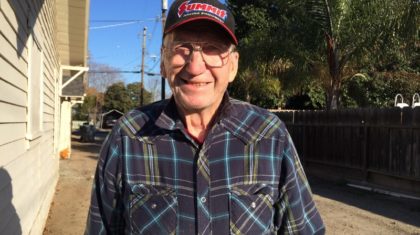
by Melissa Miklus, Senior Designer, Alta Planning + Design
There are many people out there who love numbers. In fact, it seems their love of percentages and statistics take over the true purpose of analysis to begin with. Some planning documents boast, “We surveyed 20 percent of the population, 50 percent of whom answered this question, 10 of which agree with the statement and half of those were women.” So what did we ask in the first place? And what were we trying to find? That statement contains so many numbers (and don’t get me wrong, statistics and numbers are great) but sometimes we lose focus on what we were searching for to begin with — how do these numbers reveal needs, desires, or potential changes?
That could be the response to the results of our bicycle and pedestrian count studies. Why are we counting these people and what does it really mean? In the simplest measure, we are counting use. This illustrates demand, and can be used to predict future demand. We count along trails, roadways, and sidewalks. Knowing demand is good, but understanding what it means can be awesome.
The National Bicycle and Pedestrian Documentation Project is a joint effort of Alta Planning + Design and the Institute of Transportation Engineers (ITE) Pedestrian and Bicycle Council. This effort helps communities understand usage and demand of bicycle and pedestrian infrastructure. So why is this important? For years, traffic engineers have been justifying road widening and improving corridors for motor vehicles based on Average Daily Traffic (ADT) counts. Until recently, we didn’t have this measure for bicycle and pedestrian facilities. Now, this data helps communities plan, understand, and support improving, adding, and maintaining facilities for bicyclists and pedestrians.
That use of bike and ped counts is super awesome. And very much needed in a world where our population is increasingly choosing to give up their cars for healthy transportation options and those without cars are being moved further and further away from potential employment cores. We can recognize the power of these numbers beyond demand and embrace the additional metrics of economic development, public health, and environmental impacts.
One example of stretching these numbers to their full potential is in our work with the Downtown Raleigh Alliance (DRA). Straight from their website (godowntownraleigh.com), the DRA is:
An award-winning nonprofit organization whose mission is to continue the revitalization of Raleigh’s downtown by enhancing its quality of life and contributing to its economic success. On a day-to-day basis, DRA provides five core services designed to support its primary stakeholders (property owners, government officials, business owners):
1. Safety, Hospitality & Clean Ambassadors
2. Strategic Branding & Community Communications
3. Special Events Production & City Plaza Programming
4. Retail Attraction & Merchant Promotions
5. Strategic Partnerships & Stakeholder Engagement
The DRA selected three districts within the city for Alta to count. We provided teams who used the methodology from the Bicycle and Pedestrian Documentation Project to provide standardized data collection for the Warehouse District, Downtown Core, and Glenwood South. After conducting the counts, we crunched the numbers backward and forward, provided case studies of similar cities (pulling data from the Bicycle and Pedestrian Documents Project), and provided behavioral analysis such as the effects of weather, sun/shade, and existing occupancy. While the results of our study provided a thorough analysis and fueled the DRA’s efforts to attract new businesses, we were happy to see how our study continues to live and work for the client.
After a couple years, we checked in with the client and the below is what they shared with us. We owe a big thank you to David Diaz, the President and CEO of DRA, for contributing.
Question 1: How does knowing pedestrian traffic help you make decisions for future projects, studies, actions, etc. organized by the DRA?
As the primary recruiter of new storefront businesses to Raleigh’s downtown, the pedestrian counts from the study helped educate local brokers about the intersections where retail was the most attractive.
Questions 2: What case were you able to make to the public or political officials based on this study?
Our elected officials understood the importance of the study. Indeed, the city of Raleigh funded 50% of the study as a public private partnership with our downtown organization.
Question 3: Which future reports reference this study?
Our investor’s guide to Raleigh’s downtown, entitled State of Downtown, references the counts from the study in our shopping section. The report can be found online: http://www.godowntownraleigh.com/do-business
Question 4: What advice do you have for other cities and towns in terms of pedestrian behavior and economic development?
Pedestrian counts are an important measure for gauging the success of storefront businesses. The number of people walking a downtown is a direct reflection on its success and sense of vibrancy. Pedestrian counts help make the case to a retail tenant that they stand a good chance of succeeding because of the large pedestrian counts. On the other hand, if the pedestrian counts are low then you can develop a strategy that goes beyond retail recruitment in order to make that intersection or block more appealing to a prospective tenant.
So for all the statisticians who love numbers, we planners and designers who analyze data and make recommendations, and the communities who put the numbers to work improving the lives of their citizens and visitors….numbers truly do count.


